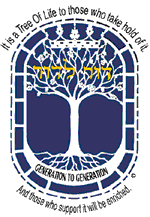|
|
Holocaust Torahs Find New Life At Synagogue by Terry Lee Goodrich | Ft. Worth Star-Telegram Nearly 40 years ago, Beth-El Congregation obtained a Torah -- a parchment scroll containing the first five books of the Bible -- that survived the Holocaust, although most of the Czech Jews who treasured it did not. Beth-El recently installed an exhibit paying tribute to the scroll's poignant history. The Torah, from a small farming community called Uhrineves in Czechoslovakia, is one of 1,564 such scrolls seized by the Nazis as they deported Czech Jews to concentration camps and death camps. Rabbi Ralph Mecklenburger of Beth-El Congregation will read from Beth-El's Holocaust Torah on Yom Kippur -- the Day of Atonement -- on Saturday. "We use it from time to time -- that's the whole idea," Mecklenburger said. "This Torah is not to be a museum piece, but to be used by living Jews." While the Torah itself is kept safe in the holy ark -- which also holds the synagogue's four other Torahs -- the exhibit includes a decorative and protective needlepoint mantle made by a congregant and placed on a representation of the scroll. The exhibit also includes Jewish belongings smuggled out of Czechoslovakia or entrusted to neighbors and retrieved after World War II. Awkward Questions Central to the exhibit is a framed history of the fate of the Uhrineves Jews. Putting together the tribute was the idea of Hollace Weiner, archivist at Beth-El Congregation, who visited Uhrineves with her husband, Bruce Weiner, five years ago. In May, Hollace Weiner visited the Czech Memorial Scrolls Centre in London. There, staffers asked her whether Beth-El had framed the certificate that came with the Holocaust Torah the center entrusted to the congregation in 1971. They asked whether the congregation knew the history of the Jews of Uhrineves. Weiner had to say no. "They gently prodded me to figuratively take the Torah out of the closet -- or the ark -- and make its history and its people come back to life," she said. The Nazis closed the Uhrineves synagogue in 1939. On Sept. 12, 1942 -- the first day of Rosh Hashanah that year -- most of the 392 Jews living in and near Uhrineves were deported to the Terezin concentration camp, according to an account from the Czech Memorial Scrolls Trust. During the following months, most were sent to gas chambers in Auschwitz, Treblinka and other death camps. Only 14 Jews from Uhrineves survived. Hitler planned to create a "museum of an extinct race," according to historical accounts. The Torahs were stored at an abandoned synagogue near Prague and cataloged by employees at the Jewish Museum in Prague who, ironically, all died in the gas chambers, Weiner said. After the war, the Torahs were, for the most part, forgotten. For more than 20 years, they were exposed to mold, insects and humidity. Some had been partially burned when synagogues were set on fire. But in 1963, a British art dealer visiting Prague learned about the scrolls. He found a benefactor who paid $30,000 and brought the scrolls to London. Today, 1,424 of the Torahs are on permanent loan to synagogues, museums, universities and Jewish retirement centers. The remaining 140 scrolls are in such poor condition that they cannot be restored, Weiner said. One of 10 Torahs At Ft. Worth's Congregation Ahavath Sholom, a Holocaust Torah from Poland is among the synagogue's 10 Torahs, Rabbi Alberto Zeilicovich said. "We don't use it because it is damaged very badly, but we keep it as a remembrance, and we take it out of the ark for the Day of Atonement," he said. And at Congregation Kol Ami in Flower Mound, a fragment of a Czech Holocaust scroll is displayed in a hall, Rabbi Geoffrey Dennis said. The Torah was badly damaged, and pieces of it were distributed among several congregations, he said. Ellen Mack, Beth-El's former education director, created a needlepoint mantle for that congregation's Holocaust Torah in the early 1980s. The design is a grapevine and pomegranates, and Mack inscribed it with the Hebrew words "Am Yisrael Chai," translated as "The Jewish People Shall Live." "We want to help the community understand what we are about, and it's important the next generation know about this," Mack said. "This Torah has gone through a lot. It's special." |

© 1999-2006, The Czech Torah Network. All Rights Reserved.
The logo design was created by Risa Mandelberg and is being used with permission.
© 1997, the paperdoll company. All Rights Reserved.
For questions or comments about this Web site please e-mail The Czech Torah Network at czechtorah@aol.com.

